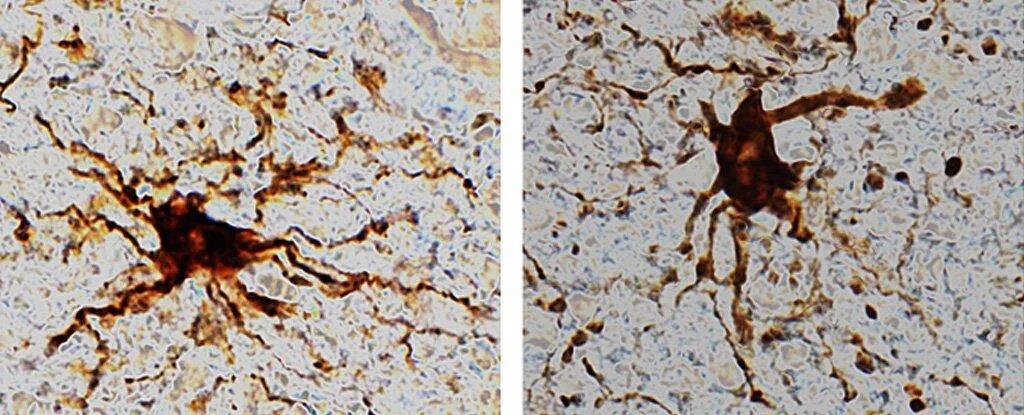Zombie cells that revive in the human brain after death
We imagine that everything stops working: without blood circulation and air supply, systems and organs simply cannot function. However, what a strange thing, a freak of nature: it turns out that inside us there is “the living Dead” – these are cells that continue to live inside an inanimate body. And they do not just live, their activity is even increasing.
So, some cells in the human brain become much more active after we die. These “zombie cells” increase gene expression and heroically try to fulfill their tasks. It looks like someone forgot to tell them that their services are no longer needed.
It was neurologist Jeffrey Loeb of the University of Illinois and his colleagues who noticed that such cells grow long appendages and continue to engage in their usual activities with enthusiasm for several hours after death.
“Most studies suggest that the brain stops completely when the heart stops beating, but this is not the case, – notes Loeb, – Our findings are necessary for the interpretation of data on the tissues of the human brain. We have not yet had time to assess the information discovered properly ”.
Most of the information about brain disorders such as autism, Alzheimer’s disease and schizophrenia, obtained as a result of experiments carried out on brain tissue after the death of a person. It is this approach that is of great importance for the search for methods or means of treatment. Brain research involving experimental animals often does not show the true picture; it is difficult to draw an analogy between animals and humans due to fundamental differences in the structure of the brain and its characteristics.
Usually, research is carried out on tissues of people who died more than 12 hours ago. Comparing the expression of genes in fresh brain tissue (removed during surgery in 20 epileptic patients) with the aforementioned brain samples from deceased people, Loeb and his team found striking differences that did not depend on age or disease.
Scientists studied the results of histology of brain tissue and noticed that cell-specific activity changes after the death of a person over time at room temperature.
The researchers note that most of the genes remained active and remained relatively stable for 24 hours; neurons and the activity of their genes were depleted rather quickly. However, the most remarkable thing here is glial cells, which activated and increased gene expression…

Cells revive after the death of the human brain. Dr. Jeffrey Loeb / University of Illinois at Chicago
At first it seems just something incomprehensible and incredible, but, in fact, a lot of meaning is hidden here, given what exactly glial cells, such as microglia and astrocytes are called to action when something goes wrong in the body. And what can happen to the body worse than death?
“The fact that glial cells are activated after death is not surprising, given that they are inflammatory, and their job is to cleanse the brain after injury, for example, after oxygen starvation or stroke “- He speaks Loeb.
The team also showed that the RNA formed during gene expression does not itself change within 24 hours after death, so any changes in its amount should be associated with the continuation of biological processes.
“Gene expression data in freshly isolated human brain samples provide an unprecedented insight into the genomic complexity of the human brain due to the retention of so many different transcripts that are no longer present in tissues after death,” the researchers wrote. in his article…
The team’s discovery has tremendous implications for both past and current research using brain tissue to better understand the development and nature of diseases that trigger immune responses.
At the same time, after 24 hours, these cells nevertheless died, and they could no longer be distinguished from the surrounding collapsing tissue.
“Researchers must take into account the described genetic and cellular changes, and shorten the postmortem time interval for research as much as possible to reduce the magnitude of these changes.” explained Loeb.
“Our research carries an important message for scientists. It lies in the fact that we now know which genes and cell types are stable, which degrade, and which increase over time. This way we can better understand the results of postmortem brain studies. “
It is amazing that even after death, we, biological organisms, are not completely static and inactive.
The full text of the study was published in the journal Scientific Reports…





